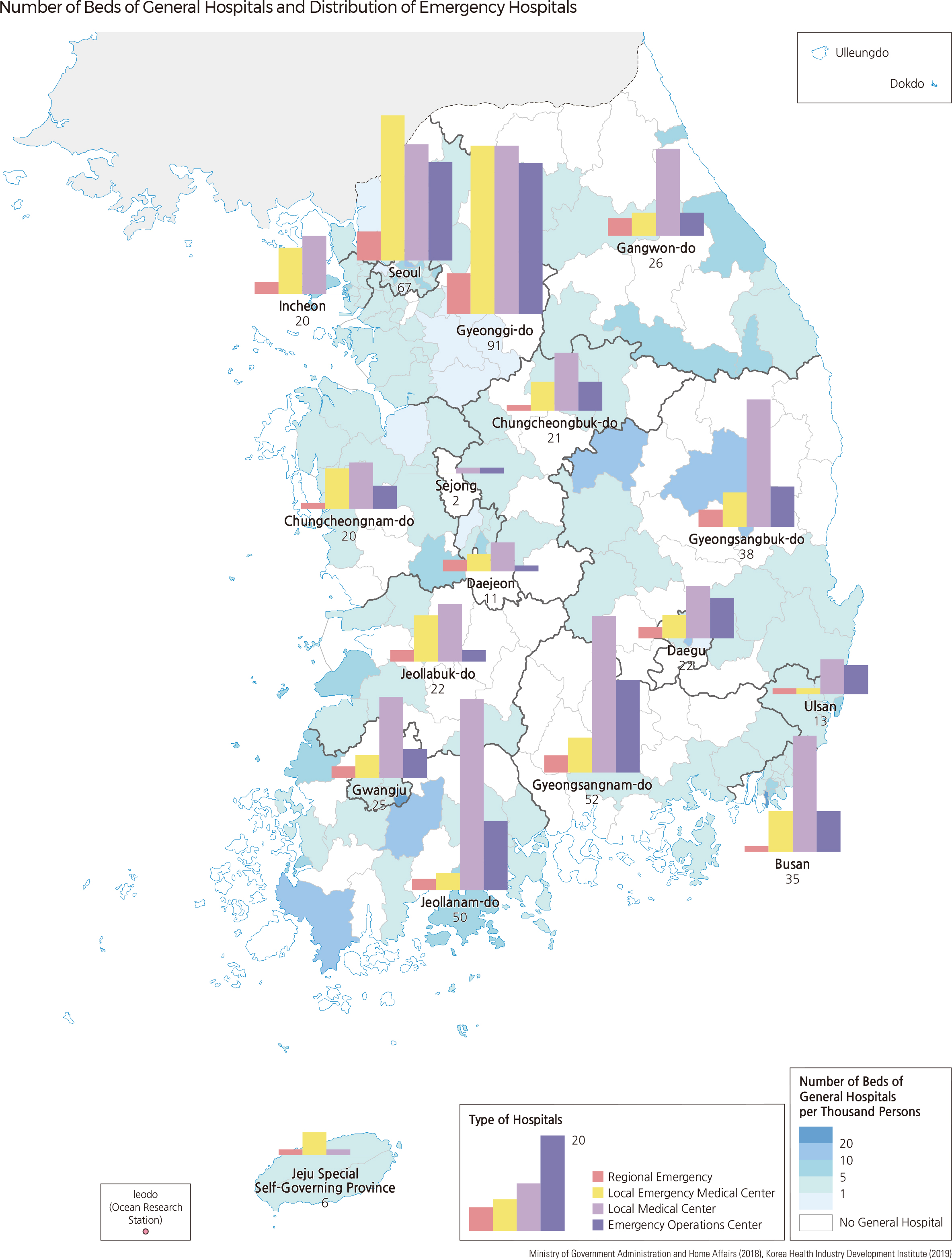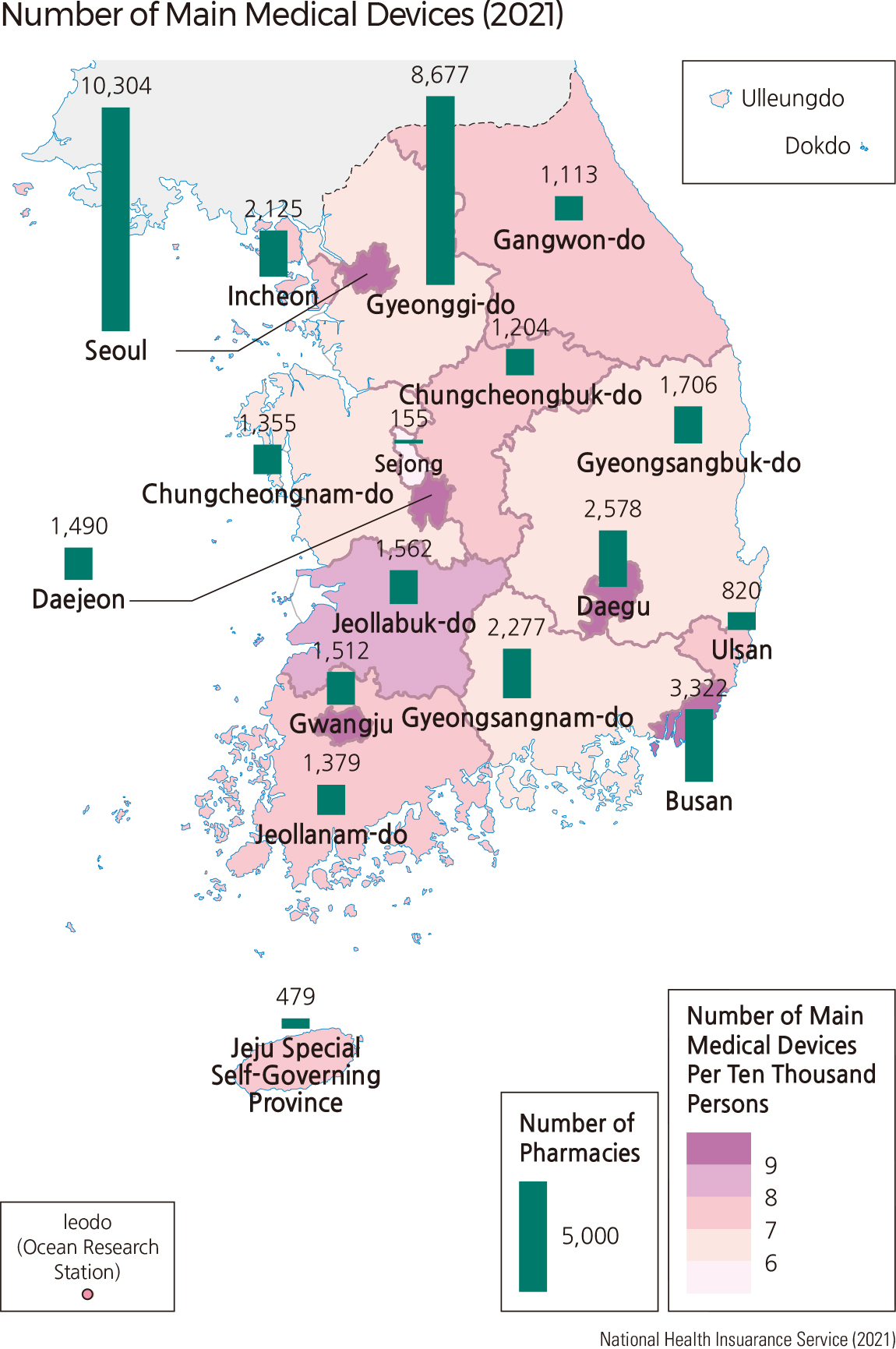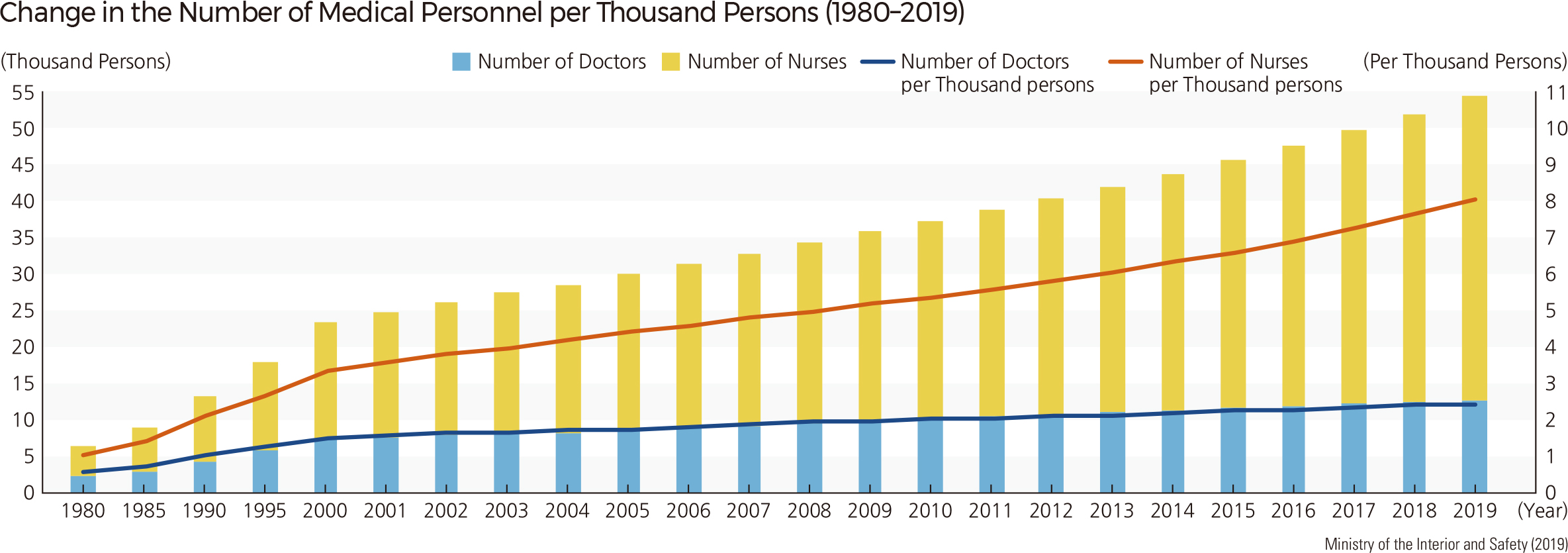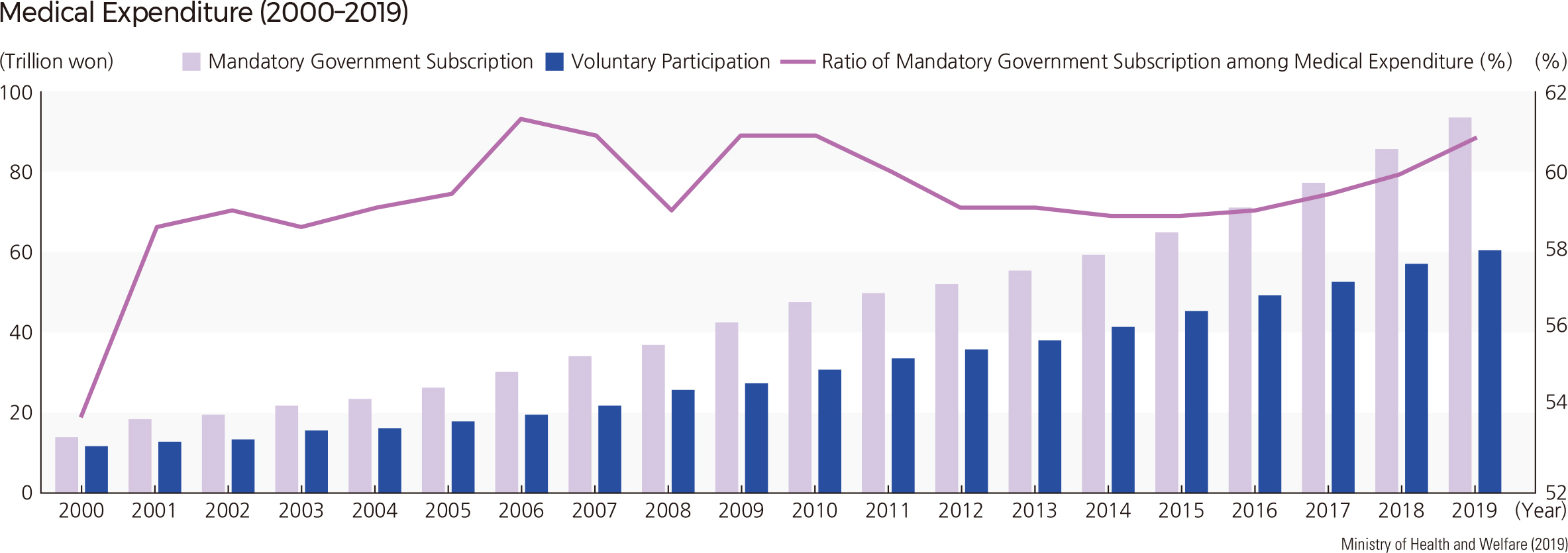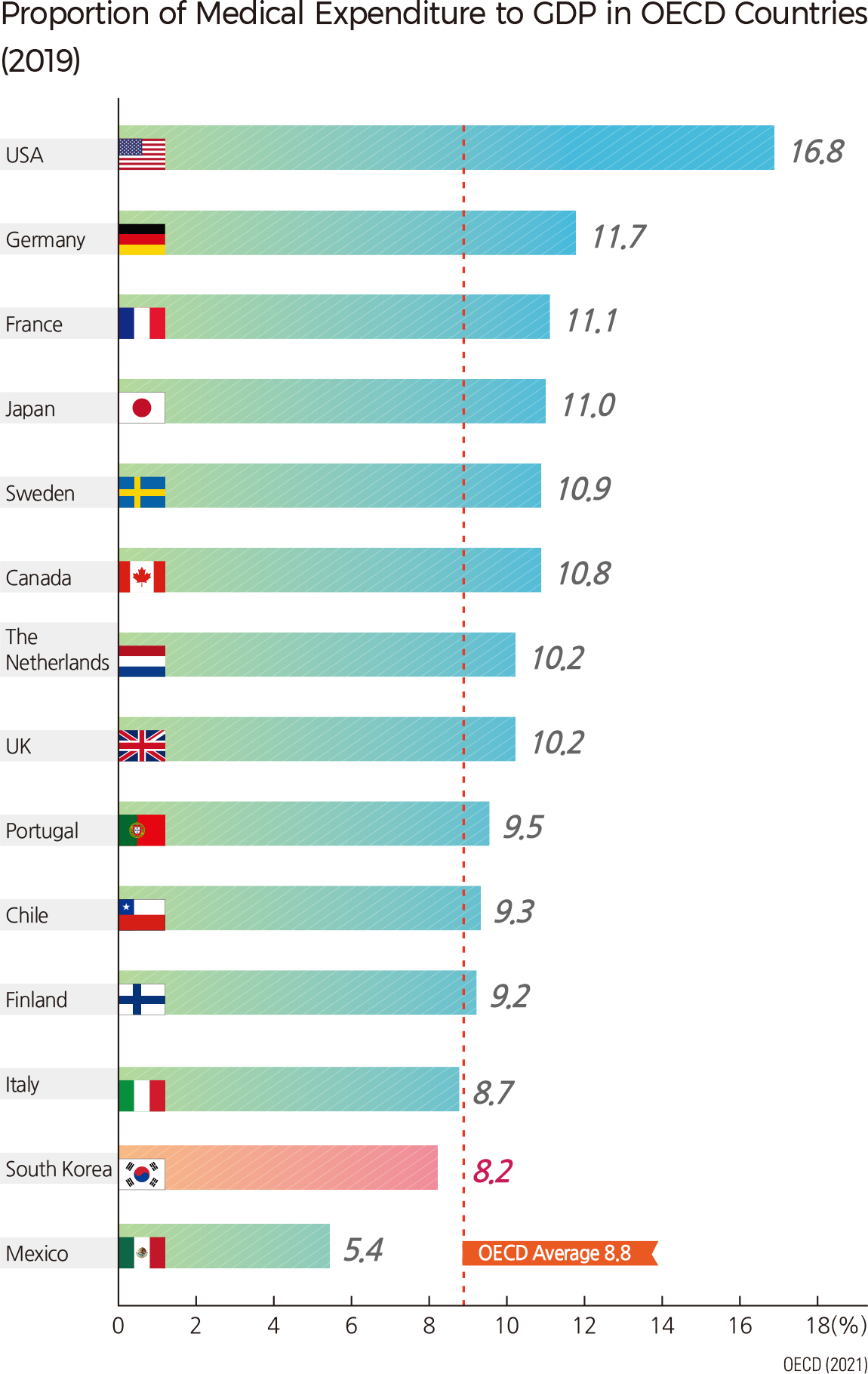English III 2021
The introduction of modern medical science paralleled economic growth. Together the national interest in health grew and led to an increase in life expectancy. Life expectancy in Korea, with an abundance of well-trained medical personnel, high-tech equipped medical facilities, and a systemically maintained health screening system, is very high in the world. Through the introduction of a universal health insurance system, all citizens enjoy the benefits of health insurance. However, there are problems in which the medical expenses have increased due to an aging population and health span (the number of years that one lives in good health) that is shorter than it is for other OECD countries. In addition, there are also rising numbers in health problems that need solutions, such as new types of diseases due to the change in lifestyle habits, differences between metropolitan and rural areas in accessing health care, and the outbreak of pandemic diseases. The issue of welfare is widely debated in Korean society. The discussion on welfare and social consensus of its expenditure centers on how to cope with the emergence of a weaker group in Korea’s population that was left behind in socioeconomic status as a result of the intensification of a competitive society that constantly seeks a higher quality of life and economic growth. As a result, government expenditures have been steadily increasing, and various types of welfare policies by age, gender, and social class have also increased. But the increase in welfare expenditures is a financial burden; the slowdown in economic growth, the rapidly aging cohort, and the decline in the population birth rate have become urgent problems that need to be solved. |
